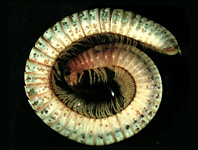Abstract
Tonkinomys daovantieni was recently described from Northern Vietnam, but very sparse information exists for the taxon. We report for the first time the karyotype of this species and investigate its phylogenetic position in the Dacnomys division using both mitochondrial and nuclear genetic data. The diploid chromosome number of the species is 2n=44. This chromosomal set consists of one submetacentric pair, one metacentric pair, and nineteen pairs of subtelocentric/acrocentric autosomes progressively decreasing in size. The X chromosome is submetacentric and approximately equal in size to the largest subtelocentric autosome. The Y chromosome is metacentric and equal in size to the smallest pair of autosomes. The phylogenetic reconstruction based on the Cyt b COI and GHR genes reveals that Saxotilomys paulinae, a species distributed in the karst formations of the Lao PDR, is the closest relative to T. daovantieni. These two taxa are similar not only in a number of morphological characters, but also in their major ecological preferences (both are petrophylic species associated with limestone karst formations). Based on our data, we can conclude that the similarities among the ecological adaptations, natural conditions and habitat preferences of these species are a reflection of their phylogenetic relationship.

